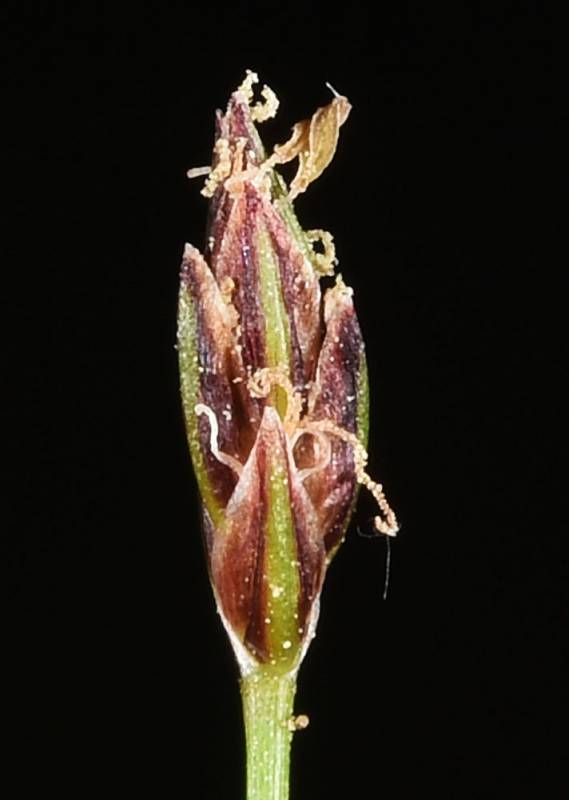Hosted by the University of Washington Herbarium, Burke Museum
Publication: Syst. Veg. 2: 154. 1817.
Origin: Native
Herbarium search: CPNWH
Notes: FNA8: "Eleocharis acicularis is abundant and ecologically important throughout much of its range. It occurs in a wide variety of habitats, including acid waters. I have not seen voucher specimens for reports from Alabama and Florida. I have not seen vouchers for the reported chromosome numbers of 2n = 30–38 or 50–58.
Eleocharis acicularis often forms large rooted mats or floating masses, which when submerged, are often non-flowering. Submerged, usually nonflowering plants are abundant throughout much of the range of the species (H. K. Svenson 1929; P. E. Rothrock and R. H. Wagner 1975). They have been called E. acicularis forma fluitans (Doellinger) Svenson; E. acicularis forma inundata Svenson; E. acicularis forma longicaulis (Desmazières) Hegi; E. acicularis forma submersa (Nilsson) Norman; and E. acicularis var. submersa (Nilsson) Svenson. The culms of the submerged plants are terete, smooth, soft to flaccid, translucent, and the partitions of the air cavities within are clearly visible. Submerged plants may closely resemble aquatic forms of some other species, especially Eleocharis parvula, E. robbinsii, and Schoenoplectus subterminalis (Torrey) Sojak (N. C. Fassett 1957; E. G. Voss 1967, 1972–1996, vol. 3).
Although E. acicularis is very variable, recognition of varieties is premature pending a worldwide taxonomic revision of subg. Scirpidium. Much of the variation is apparently due to phenotypic plasticity in response to environmental factors, especially water depth (P. E. Rothrock and R. H. Wagner 1975). The named varieties intergrade extensively, and achenes, which are important in defining the varieties, are often absent. H. K. Svenson (1929) recognized four varieties and two forms for North America, but later (1957) did not recognize infraspecific taxa. "
Last updated 11/18/2023 by David Giblin.

